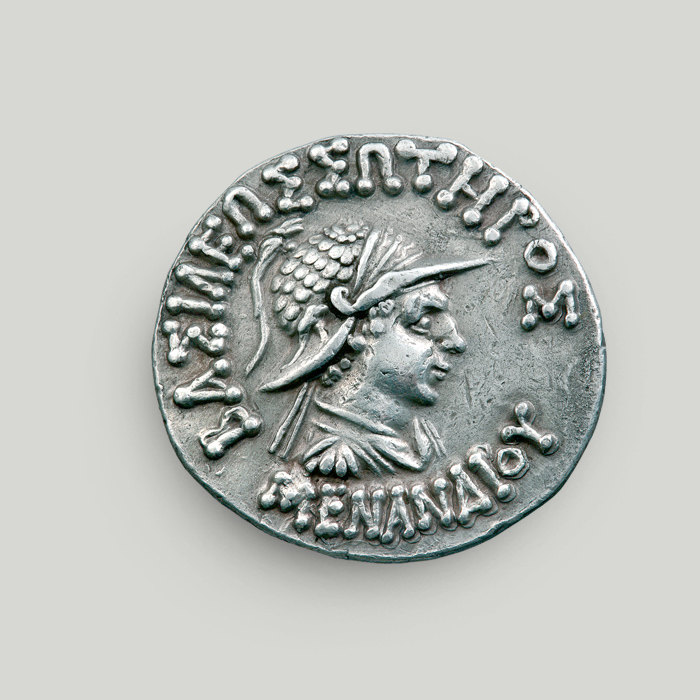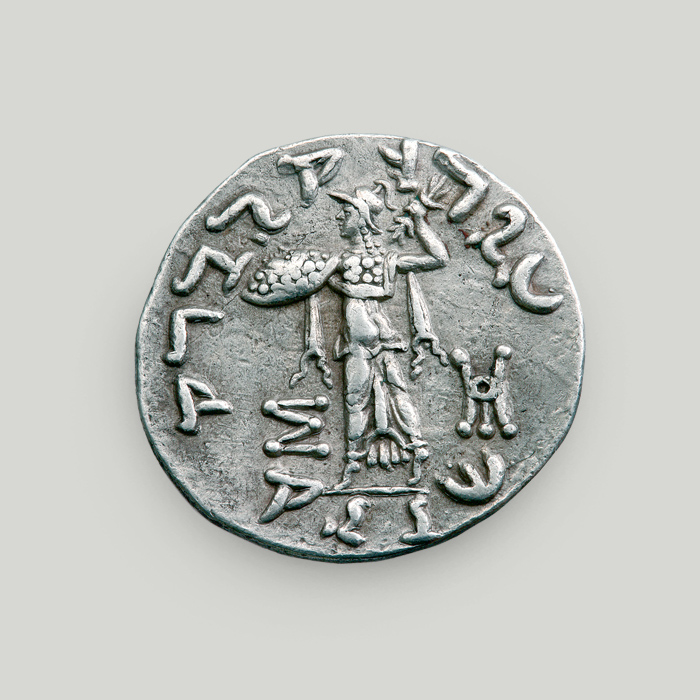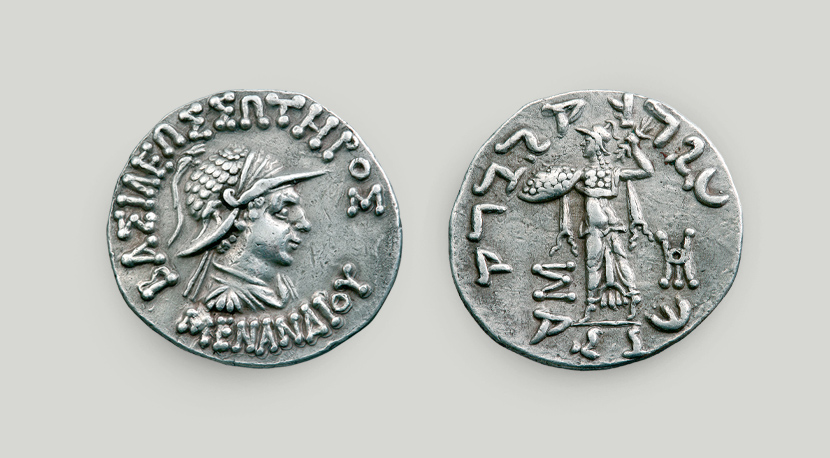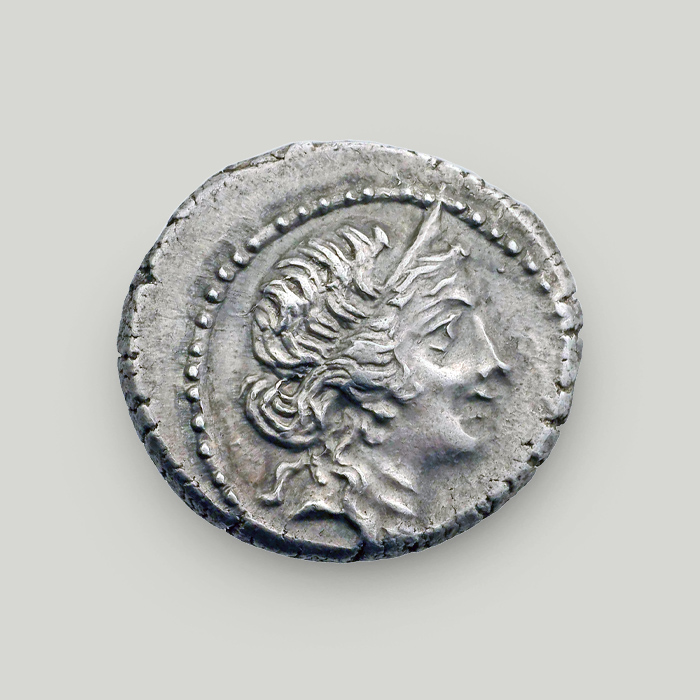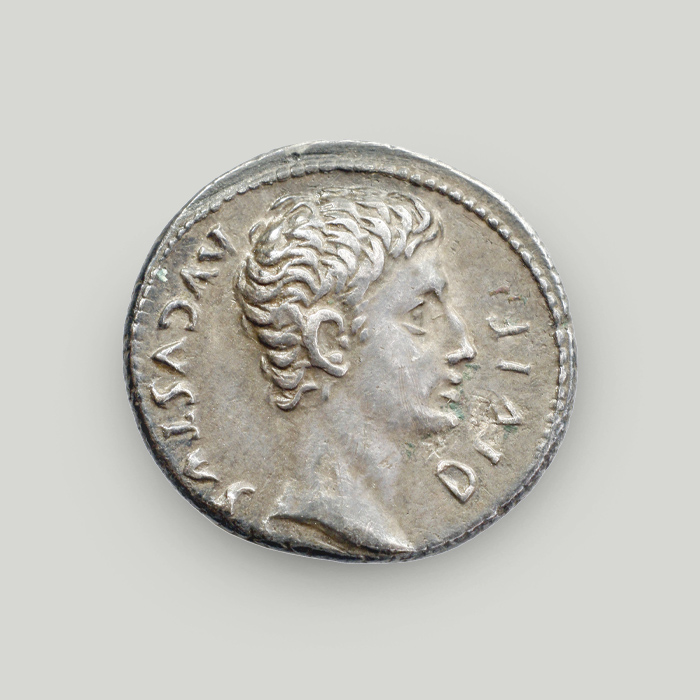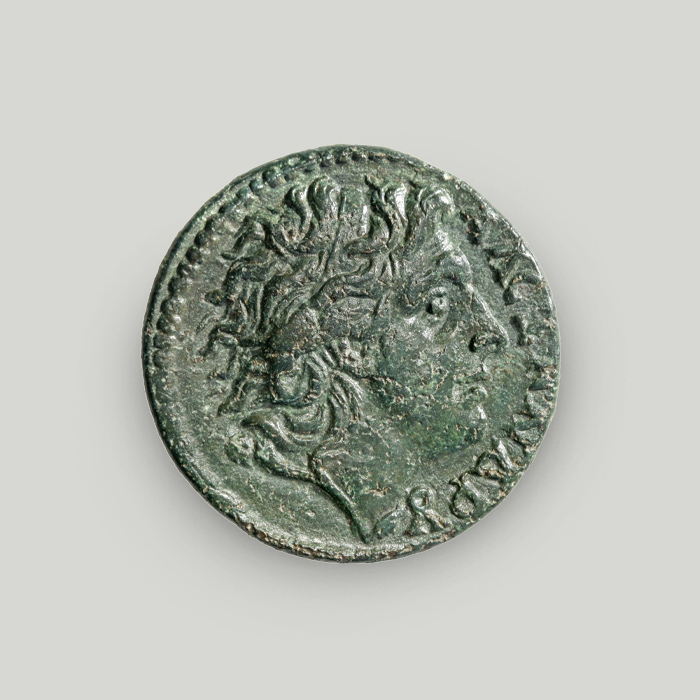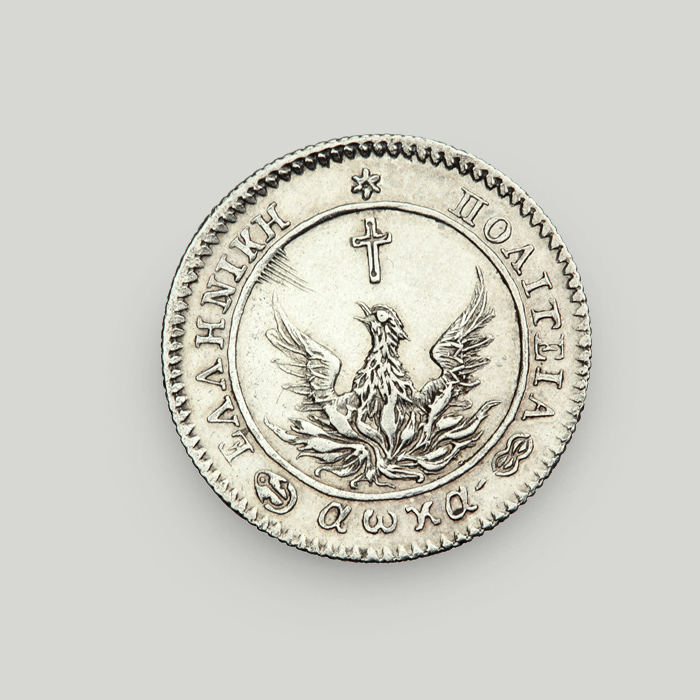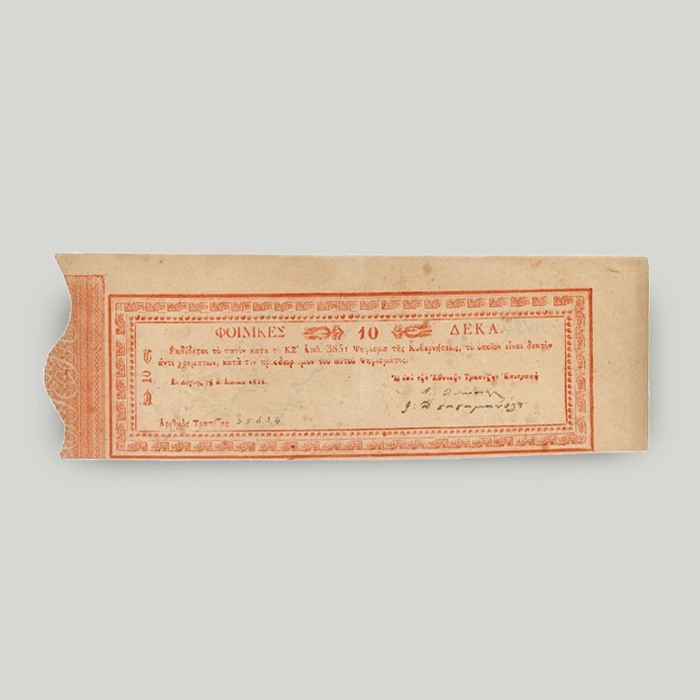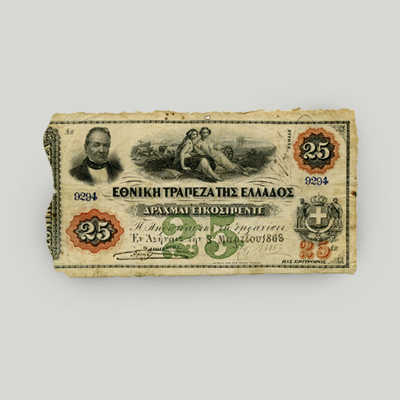Silver tetradrachm of Menander I Soter, Indo-Greek Kingdom
The silver tetradrachm of Menander I Soter was issued in the 2nd century BCE. Menander I Soter is considered the most important king of the Indo-Greek Kingdom. He issued coins in copious quantities and was the first to introduce the depiction of Athena Alcidemos in Indo-Greek coinage. The legends of his coinage were bilingual: they were written in Greek and Kharoshti, a local dialect and script.
Obverse
Helmeted head of King Menander I Soter in profile facing right. The legend around the type reads ΒΑΣΙΛΕΩΣ ΣΩΤΗΡΟΣ ΜΕΝΑΝΔΡΟΥ (of king Menander Soter, i.e., “the Saviour”).
Reverse
The goddess Athena in profile facing left. She holds a shield and a thunderbolt. The legend reads Maharajasa tratarasa Menamdrasa. This is the transcription into the local Kharoshti dialect of the Greek legend on the obverse.
A brief introduction to the Indo-Greek Kingdom
The Indo-Greek Kingdom covered an area in the south of Asia, mainly present-day Pakistan. It was established in the mid-3rd century BCE. It was then that Demetrius I the Aniketos (Unconquered), son of King Euthydemus I and king of the Greek Kingdom of Bactria (present-day Afghanistan), significantly expanded his kingdom towards Hindu Kush and northwest India. Around 140 BCE, the Greeks lost the territories of Bactria. The region fell under the control of local nomadic tribes from the North.
The Greek Kingdom of India survived until 10 CE. Around that time, it was raided by Kushans and Indo-Scythians.
Our knowledge on the history of the Greek Kingdom of India is limited. It is mostly based on numismatic evidence. That is our main source of data for dating, for the lines of succession and for the relations between the local rulers.
The most important king of the Indo-Greek Kingdom
Menander I Soter (155-130 BCE) is considered the most important king of the Indo-Greek Kingdom.
According to one testimony, he was born in the village of Kalasi in the Hindu Kush mountain range, close to one of the Alexandrias built by Alexander the Great. He was born into a noble family of Greek descent.
Menander married Agathoclea, widow of King Agathocles of Bactria. He ascended the throne of the Indo-Greek Kingdom shortly after.
He successfully repelled invasions by barbaric tribes and even managed to expand the kingdom. The capital of his kingdom was Sagala (present-day Sialkot, Pakistan) in the region of Pentapotamia.
Minting under Menander I
Menander issued coinage in copious quantities. His kingdom’s location and extensive commercial transactions with the West favoured the wide circulation of his coins.
At the same time, though, coinage from the neighbouring kingdom of Bactria, like the silver tetradrachm of Eucratides I, was also in circulation.
Menander I in Ancient Indian literature
Menander is the only king mentioned in Ancient Indian literature.
In the philosophical dialogue Milindapanha (Indian for “the questions of Milinda”, i.e. Menander), the unknown author writes about the king. The text records the discussion between Menander and the Buddhist sage Nagasena.
Athena Alcidemos, the “Defender of the People”
Menander was the first to introduce the depiction of Athena Alcidemos in Indo-Greek coinage.
The cult of this aspect of Athena as Defender of the People (the meaning of the divine epithet alcidemos) was particularly popular in Macedonia. The cult statue was kept at the goddess’ temple in the city of Pella in Macedon. Her depiction was also included in the types of coinage issued by kings Antigonus Gonatas and Philip V of Macedon.
Bilingual coin legends
When the Greeks expanded from Bactria into Indian territories, their coinage was adapted to the local traditions.
Bilingual legends became the new standard:
- Greek on the obverse.
- Kharoshti, a local Indo-Iranian dialect and script, on the reverse.
Fractions and etymology
As suggested by its name, the tetradrachm equalled 4 drachmas. Each drachma equalled 6 obols.
Before the invention of coins, people used iron spits of 1-1.5 meters in length for their daily transactions.
The spits was called ovelos, and 6 of them were considered a standard handful. This handful was later dubbed “drachma”, as it could be grasped (drattomai in Ancient Greek) in a person’s fist.
When coins started to circulate, the word ovelos (the previously used spit) changed to ovolos (“obol” in modern numismatics) and was used to denote the value once held by 1 spit, i.e. 1/6 of a drachma.
The Alpha Bank Numismatic Collection is not open to the public.
Research visits to the Numismatic Collection can be organised upon request.
Contact us to book your visit.
